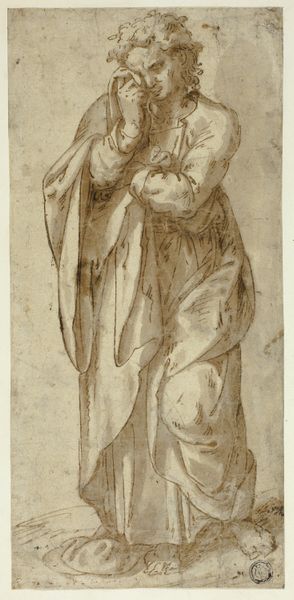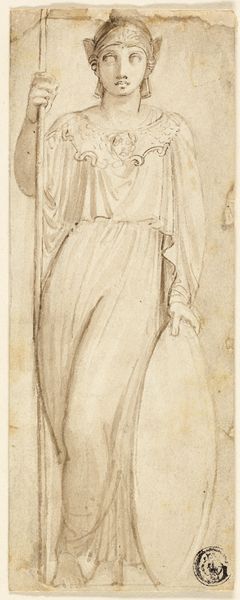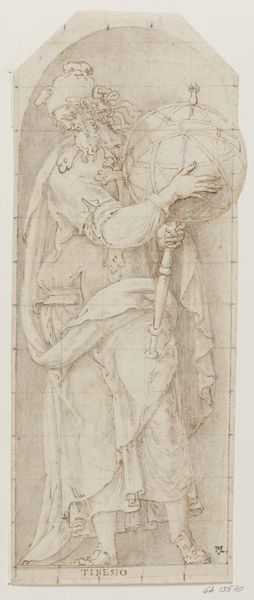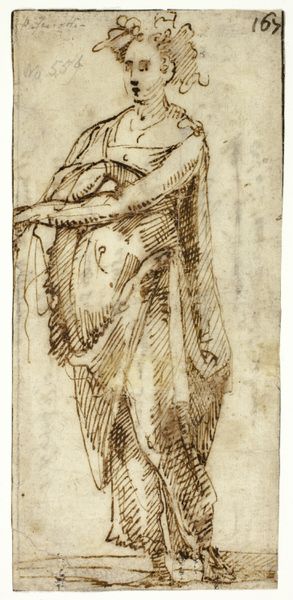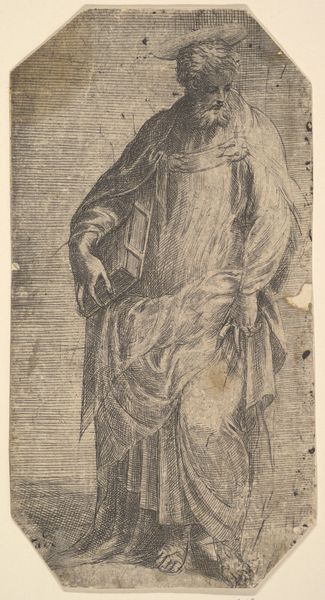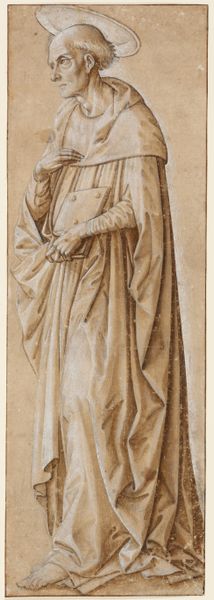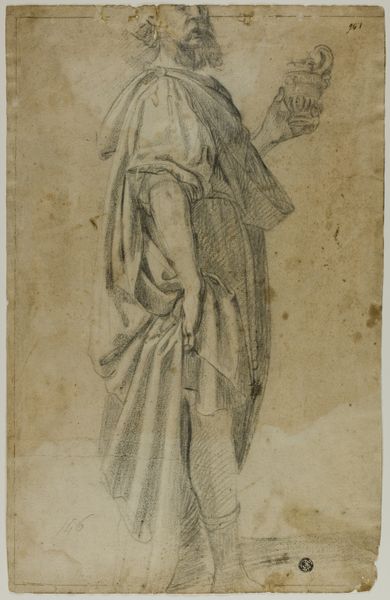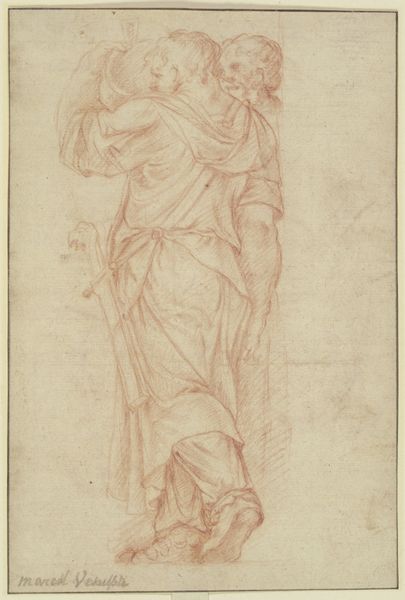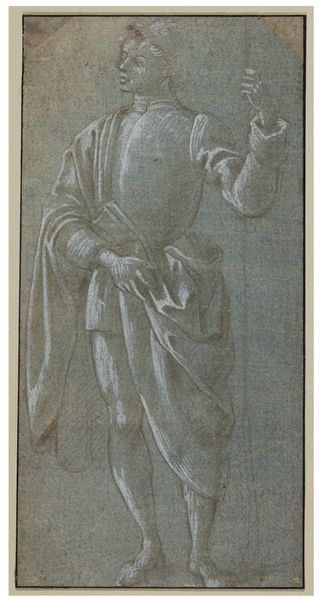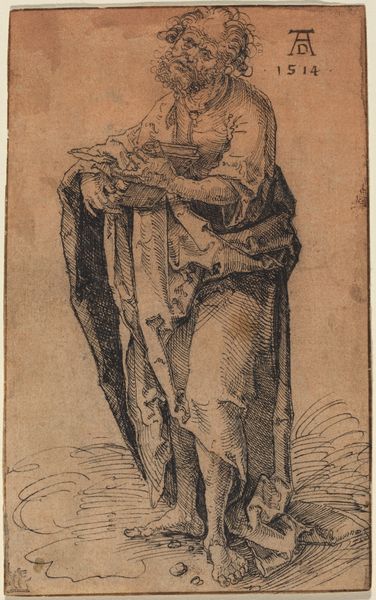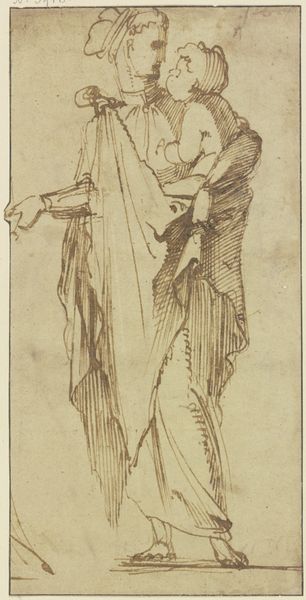
drawing, pen, charcoal
#
portrait
#
drawing
#
charcoal drawing
#
figuration
#
11_renaissance
#
pencil drawing
#
pen
#
charcoal
#
history-painting
Dimensions: sheet: 31.8 x 13.5 cm (12 1/2 x 5 5/16 in.)
Copyright: National Gallery of Art: CC0 1.0
Curator: This is a pen and charcoal drawing entitled "A Standing Saint," attributed to Domenico Beccafumi. What's your initial reaction to it? Editor: Well, the first thing that strikes me is the incredible textural quality. You can almost feel the rough weave of the saint's robe just by looking at the charcoal and ink work. It seems raw, almost unfinished. Curator: That unfinished quality is actually quite common in preparatory drawings from the Renaissance. It offers us a glimpse into the artist's process, their initial explorations of form and composition. Beccafumi, remember, was working in a world still influenced by religious patrons and the Church's power. Editor: That makes me think about the role of religious imagery at that time. It wasn't just art for art's sake. It served a crucial function, instructing and inspiring the faithful, reinforcing existing power structures. Was this sketch perhaps meant as part of a larger commission, say for a fresco? Curator: Possibly, given Beccafumi's activities in Siena. Looking at the materials themselves, we can infer certain aspects of Beccafumi’s workshop. The ready availability of charcoal and pen, the cheapness of paper, speaks to a culture of constant sketching and refining. Editor: The medium definitely influences our understanding of the message, wouldn't you agree? A charcoal sketch, for instance, conveys a sense of immediacy and process that, say, a finished oil painting lacks. The drawing also emphasizes that image-making was a commercial venture of workshops producing sacred likenesses for an eager viewership. Curator: Precisely. And notice the subtle variations in line weight and shading? That demonstrates considerable control of the media to delineate form and imbue this Saint with character. But it also hints to a reliance on a particular labor division. Editor: Right. The act of producing a piece of art was embedded in broader social practices. Thanks to sketches like this, we gain some understanding of workshop activity, as well as a sense of the devotional needs of Renaissance audiences. Curator: Indeed. Examining the materiality allows us to reassess the creative process that defined this artwork. Editor: So while the exact historical purpose is unclear, the image and production method themselves tell quite the historical narrative about artistic process and social use. Curator: I couldn’t agree more. Thanks for shedding some light on how you view it, this has certainly highlighted some very significant aspects to be highlighted in the tour.
Comments
No comments
Be the first to comment and join the conversation on the ultimate creative platform.
